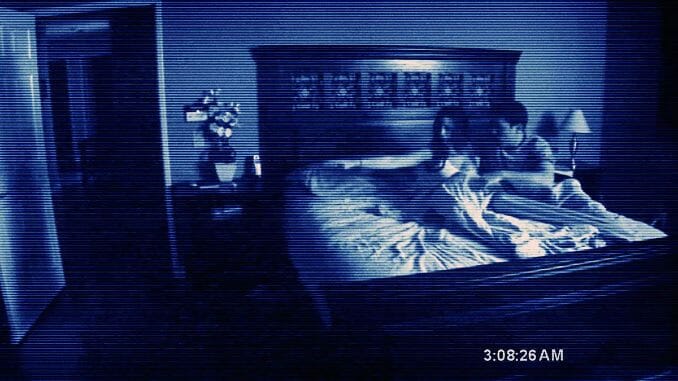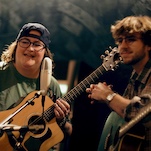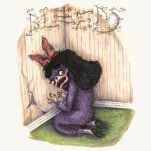Horror Doc The Found Footage Phenomenon Only Finds Subgenre’s Surface

Niche horror documentaries like The Found Footage Phenomenon find themselves in precarious situations. Filmmakers attempt to explore and lecture about topics in ways that will inform the least observant audiences, but aren’t the target demographics for hyper-focused horror documentaries already beyond introductory explainers? The Found Footage Phenomenon will exclusively premiere on horror streamer Shudder—surely the platform’s dedicated users already know about found footage, its home video beginnings and its popularized backstory to date. Where Shudder’s Horror Noire: A History of Black Horror vocalizes vital, passionate truths with a documentarian’s urgency, The Found Footage Phenomenon is a subgenre clip-show represented by whichever movies’ talent appears as talking heads. That’s not to say there’s icky bias, just that this marshmallow-fluffy doc presents an incomplete picture.
The Found Footage Phenomenon is structured chronologically based on the first adaptations of found footage until the documentary’s production wrap, seemingly concluding around 2020’s Host. Creators Sarah Appleton and Phillip Escott assemble interview subjects to chat about how found footage once took the world by storm thanks to The Blair Witch Project, then again with Paranormal Activity. You’ll hear from noteworthy found footage filmmakers like André Øvredal (TrollHunter), Eduardo Sánchez (The Blair Witch Project) and Oren Peli (Paranormal Activity) alongside a few genre academics, such as decorated author and analyst Alexandra Heller-Nicholas. They’ll tell you about found footage techniques, what in-your-face cinematography accentuates and that’s about it—nothing beyond what could probably be ripped from DVD special features.
Frustratingly, marquee titles—primary discussion topics—are picked and chosen on whims. Dean Alioto extensively discusses his 1989 alien abduction flick The McPherson Tape, which producers (and Alioto) herald as the first “real” found footage horror film. There’s a note on the first-person perspective elements within Peeping Tom to set the stage, but nary a mention of Charles B. Pierce’s 1972 Bigfoot mockumentary The Legend of Boggy Creek despite acknowledging Ruggero Deodato’s The Cannibal Holocaust. Throughout The Found Footage Phenomenon, the documentary acts as if its pool of pundits are responsible for every single one of the subgenre’s milestones while ignoring influential benchmarks made by others who didn’t participate. Host is platformed as a marvelous “Screen Life” development, while something like 2013’s revolutionary Skype possession flick Unfriended earns barely a passing whisper (also ignoring the “Is Screen Life found footage?” debate).
For that reason alone, The Found Footage Phenomenon doesn’t ever reach levels of exceptional documentary insight. Filmmakers might drop anecdotes about how found footage films require grueling long takes or how Halloween-y practical effects require off-camera trickery, but it’s all been acknowledged before. There’s an emphasis on found footage’s unprecedented intimacy, along with the reasons why found footage suffered a gap between The Blair Witch Project and Paranormal Activity (VHS versus advanced at-home camera options), which most dedicated horror fans already understand. Hence the docs’ ongoing issue with acting as a starter kit for found footage newbies while geared towards viewers already brimming with horror knowledge.
-

-

-

-

-

-

-

-

-

-

-

-

-

-

-

-

-

-

-

-

-

-

-

-

-

-

-

-

-

-

-

-

-

-

-

-

-

-

-

-








































